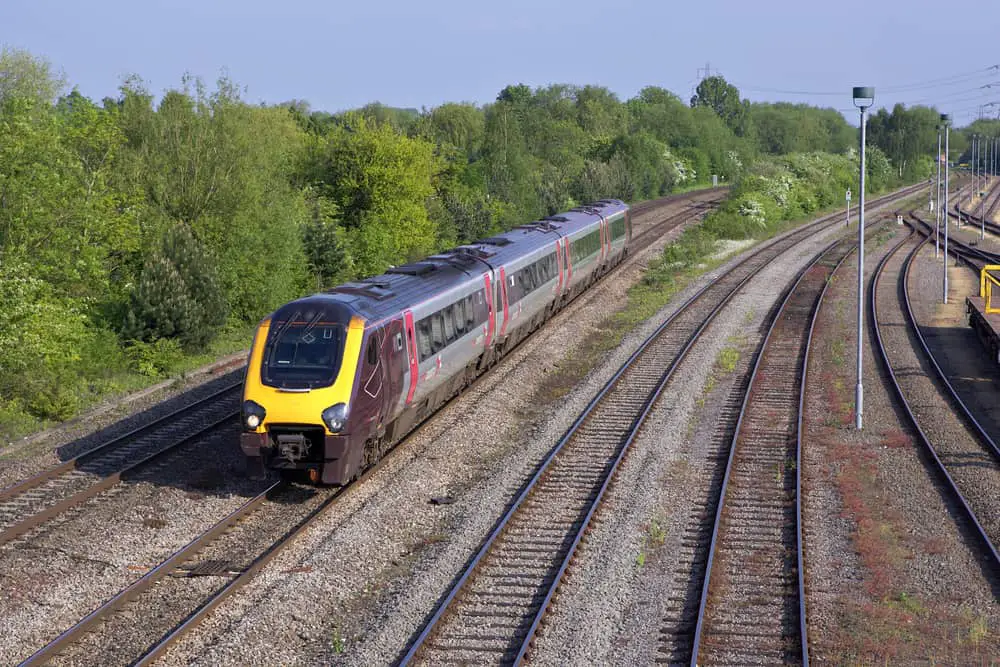
Trains are remarkable pieces of machinery that are both very strong and heavy. However, a consist is a phrase that describes the collection of rail cars and locomotives that make up a train in American railway jargon.
The locomotive is the powerhouse of the train that does all the pulling power and can pull weighty loads. But, with locomotives in mind, how much horsepower does a train have?
Train locomotives can have various power outputs from their many applications, often between 4,000 and 17,000 horsepower. For example, passenger trains with electric locomotives can average 9,500 horsepower, which is higher than diesel freight trains, that average around 4,500 horsepower.
It is essential to know that the pulling force of a locomotive is commonly measured in tractive effort rather than horsepower, which also differs significantly between passenger and freight trains.
Today’s locomotives, however, use an electronic transmission that allows them to utilize their maximum horsepower output at any time. So, to better understand horsepower in trains, let’s take a closer look.
How Much Horsepower Do Different Train Locomotives Have?
Railway engines come in over 16 varieties. Locomotives can either generate their power using fuel (such as coal, wood, petroleum, diesel, or natural gas) or electricity from a different source.
Most diesel locomotives are “diesel-electric” because they have electric transmissions. Although still in use, mechanical and hydraulic transmissions are more frequently seen on multi-unit trains or lightweight locomotives.
So to better understand how much horsepower each locomotive uses, let’s look at a few well-known models and how much they output.
| Type of Train | Average Horsepower |
|---|---|
| Diesel-Electric | 4,000 – 6,000 |
| Full-Electric | 6,000 – 38,000 |
| Steam | 1,000 – 6,000 |
The Horsepower Of Diesel-Electric Locomotives
The hybrid diesel locomotive is a fantastic demonstration of strength and creativity. Most diesel and diesel-electric locomotives have between 4,000 and 6,000 horsepower.
It combines excellent mechanical technology, such as a massive 8- to 20-cylinder, two-stroke diesel engine, with some powerful electric motors and generators, as well as a small amount of computer technology, for good measure.
Two examples that we will be using are the GE AC6000CW and the GE ES44DCi models.
GE AC6000CW – 6,000 Horsepower
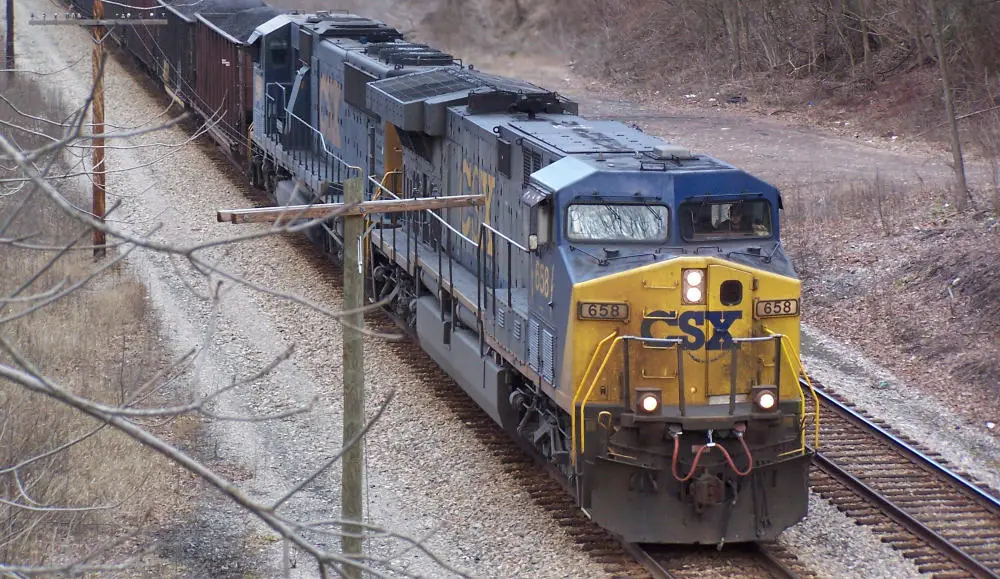
The AC6000CW is a 6,000 horsepower and 4,500 kW diesel-electric locomotive manufactured by GE Transportation between 1995 and 2001.
With a tractive effort of 188,000 starting pound-force, It is one of the world’s most powerful single-engine diesel locomotives and was built to pull heavy coal and ore trains, which require plenty of tractive power.
GE ES44DCi – 4,400 Horsepower
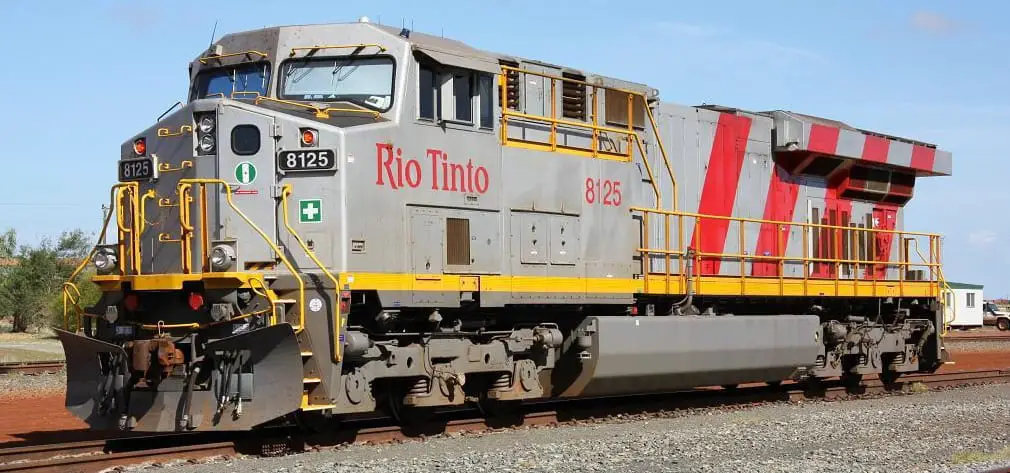
Over 1,300 GE ES44DC locomotives with six axles, 4,400 horsepower, and 166,000lbf tractive effort were manufactured between 2004 and 2008.
Among the first clients to order the model were BNSF Railway, Canadian National (CN), CSX, and Norfolk Southern (NS; having a 4,000hp variant known as the ES40DC), while Pilbara Iron ordered their own specialized variant: the ES44DCi, which has an expanded radiator section, slightly resembling the AC6000CW, to increase cooling capacity for operating in the Australian climate.
The Horsepower Of Full-Electric Locomotives
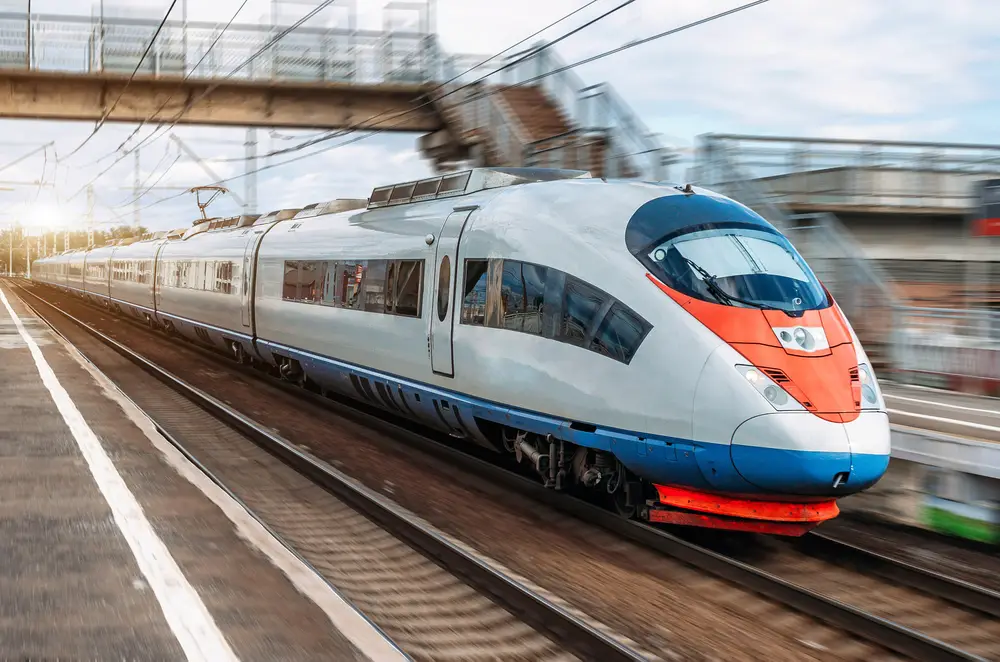
Unlike diesel locomotives, electric locomotives are silent since there is no engine or exhaust noise and less mechanical noise.
Electric locomotives can generate between 6,000 and over 38,000 horsepower, while most average around 9,500 horsepower. In addition, electric locomotives provide several benefits as they are only power-converting rather than power-generating machinery.
However, in terms of existing horsepower, let’s look at two of the most powerful electric trains: the Shenhua Mining Group Shen 24 and the Ural Locomotives 2ES10S full-electric models.
Shenhua Mining Group – Shen 24 – 38,700 Horsepower
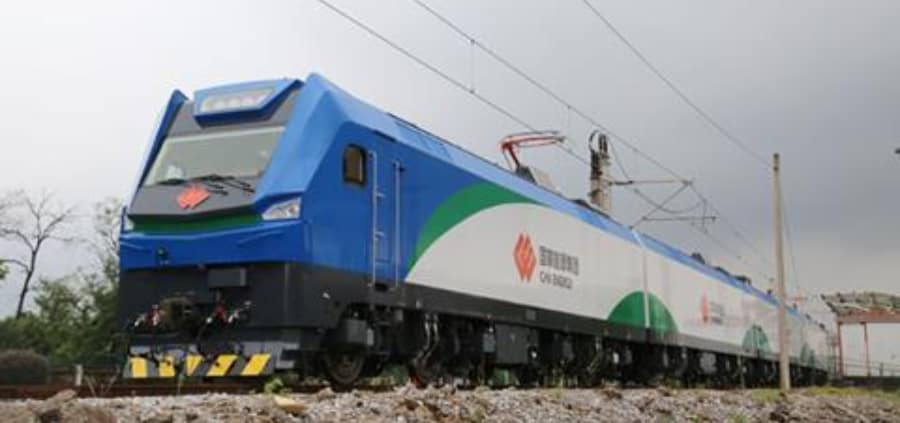
The Shen-24, with around 38,700 horsepower, is the locomotive with the highest power in the world. It can handle slopes at 1.2% while supporting a 10,000-ton load of freight. Additionally, this monster has a top speed of 75 mph and can manage a tractive effort of 512,564lbf.
Ural Locomotives 2ES10S – 17,701 Horsepower
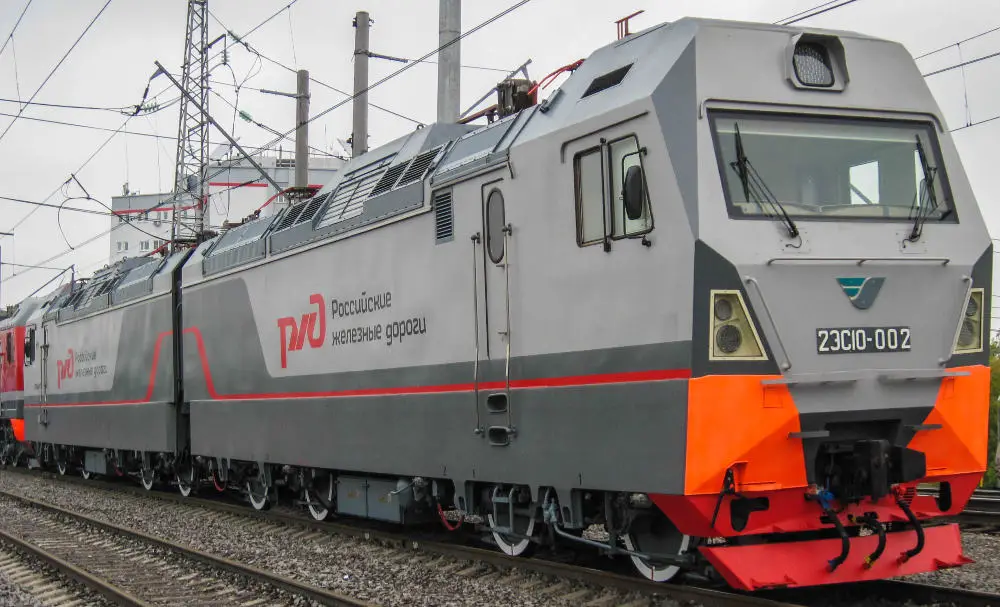
The 2ES10 electric locomotive from Ural Locomotives, which can generate up to 17,701 horsepower and pull loads as heavy as 9,000 tonnes, went into production in 2010, which could produce a whopping 176,000lbf of tractive effort.
When the gradient abruptly changes, the 2ES10 electric locomotive, in its trisection configuration, can continue to carry trains with a load of up to 9,000 tonnes without any issues. This results in much shorter delivery times and lower transportation expenses.
The Horsepower Of Steam Locomotives
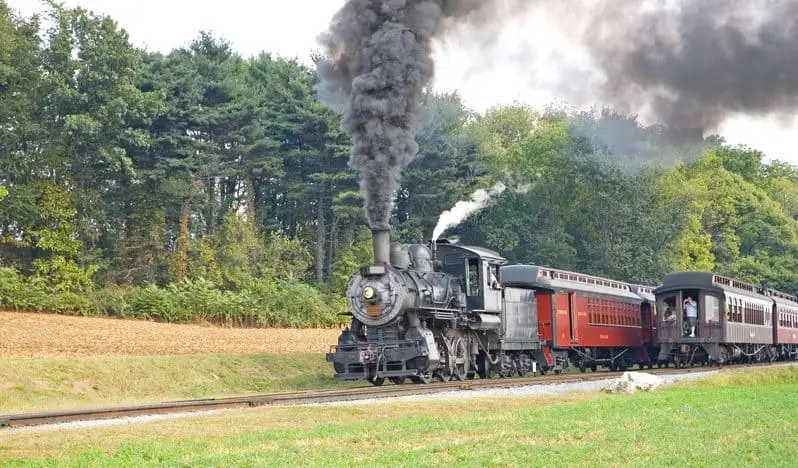
The historically famed steam locomotives were some impressive, bulky machinery that still marvels at railway enthusiasts today.
Steam locomotives could produce anything from 1,000 horsepower in the past to about 6,000 horsepower in today’s existing steam locomotives, even though there were many more models than there are now.
With that in mind, let’s look at the Union Pacific 4041 “Big Boy” and Union Pacific 844 “Living Legend” steam locomotive models.
Union Pacific 4041 “Big Boy” – 6,000 Horsepower
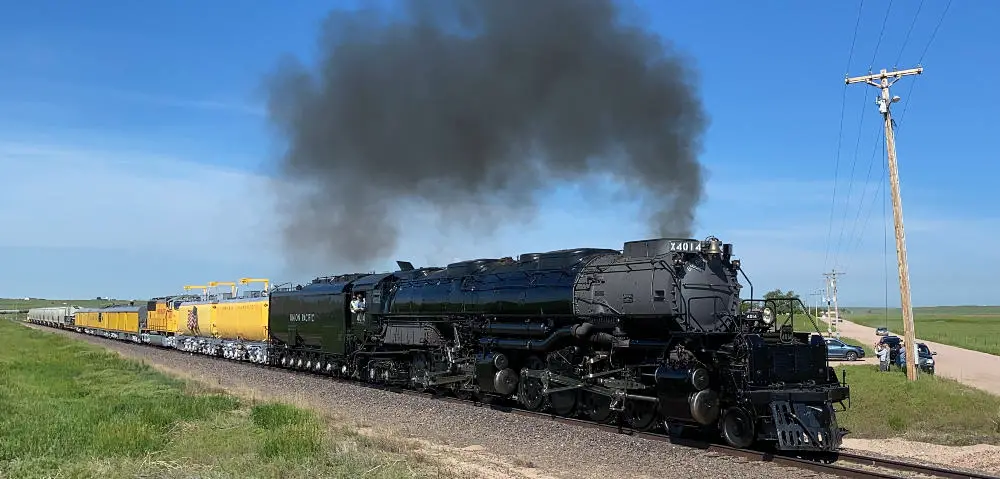
One of the largest and most potent steam locomotive series ever constructed is called the Pacific 4041 and dubbed the “Big Boy,” which was known to have around 6,000 horsepower and could reach a top speed of 80mph. The Big Boy could also manage 135,375lbf of tractive effort.
The American Locomotive Company of Schenectady, New York, produced the Big Boy locomotives from 1941 to 1944 solely for the Union Pacific Railroad.
These locomotives were primarily made to handle heavy freight traffic in the Wasatch Mountains, where trains had to contend with a continuous grade of slightly over 1.5 percent on a section of track east of Ogden, Utah.
Union Pacific 844 – 4,850 Horsepower
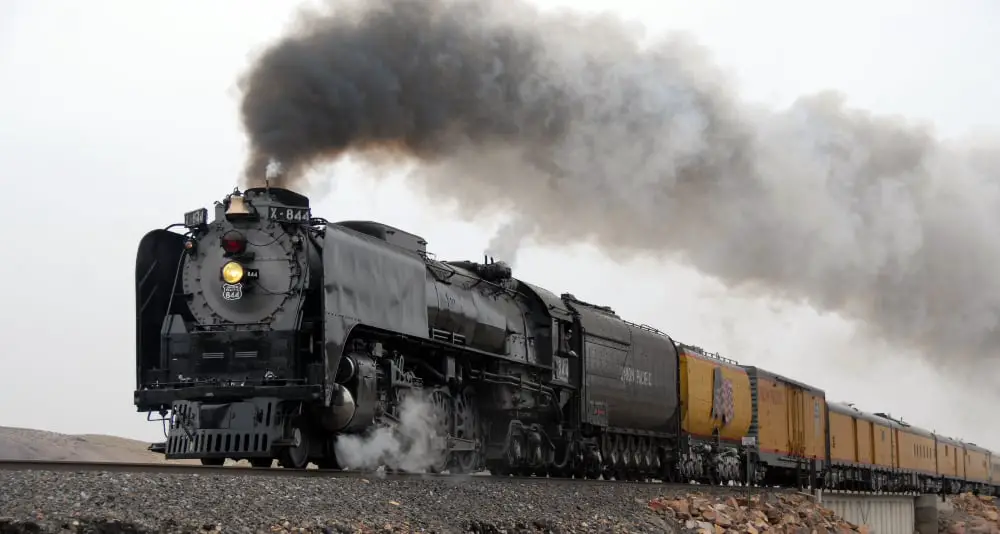
The locomotive, dubbed the “Living Legend” of Union Pacific, is well-known to railfans for its excursion trips, particularly over the railroad’s famed passage of Sherman Hill between Laramie and Cheyenne, Wyoming.
The Pacific 844 can travel at a top speed of 120 mph and produces 4,850 horsepower. The tractive effort of the 844 is approximately 67,000lbf of tractive effort.
What Is Tractive Effort?
In railway engineering, the terms tractive effort and tractive force are frequently used interchangeably to refer to a locomotive’s capacity to push or pull.
Tractive effort is proportional to traction. For instance, an automobile’s wheels feature rubber that applies torque to carry the vehicle. When a torque is applied to a rubber wheel, a force is exerted along the ground.
For example, one may assume that if the wheel spins on ice, it will skid and stop moving. However, the tractive force is the friction between the wheel and the ground that allows it to move forward.
In other words, the tractive effort is determined by available horsepower and weight – just as a muscle car may have enough power to spin its tires, so can a locomotive. As a result, 4500 HP with no weight on the driving wheels produces no tractive effort.
Finally, several measuring methods, such as tractive effort and the foot-pound-second system, employ the pound of force or pound-force (lbf) as their unit of force. So, the higher the tractive effort a train locomotive has, the more freight it will be able to pull.
As a result, getting to know the amount of tractive effort is essential information, especially for freight trains hauling tons of heavy cargo.
Conclusion
Most modern trains have between 4,000 and 17,000 horsepower; however, as you can see, some electric trains may reach up to 38,000 horsepower.
Despite this, electric trains are becoming increasingly common compared to diesel hybrids and other types and have the highest horsepower. However, in some cases, the tractive effort is more critical (for freight trains) than horsepower.
